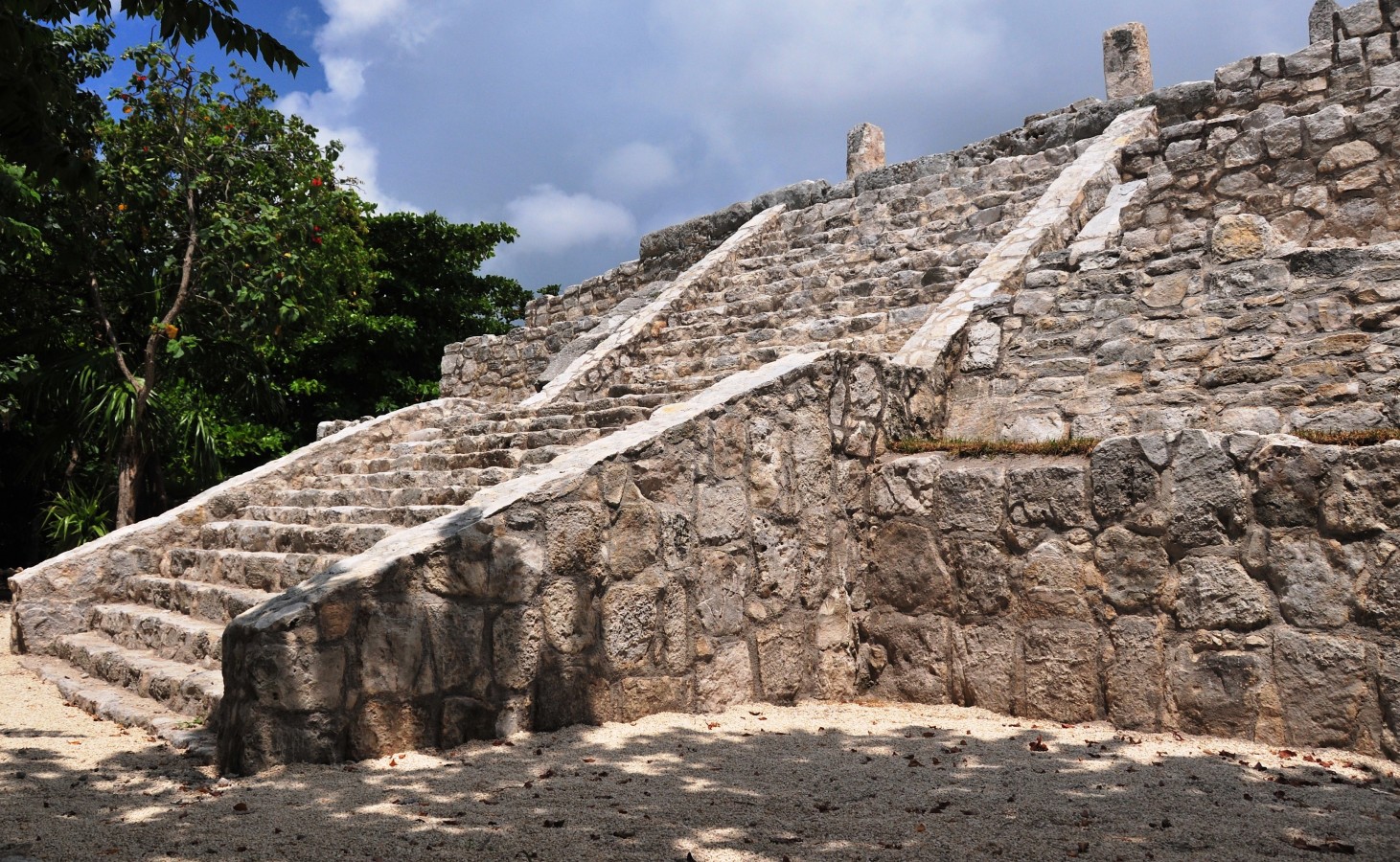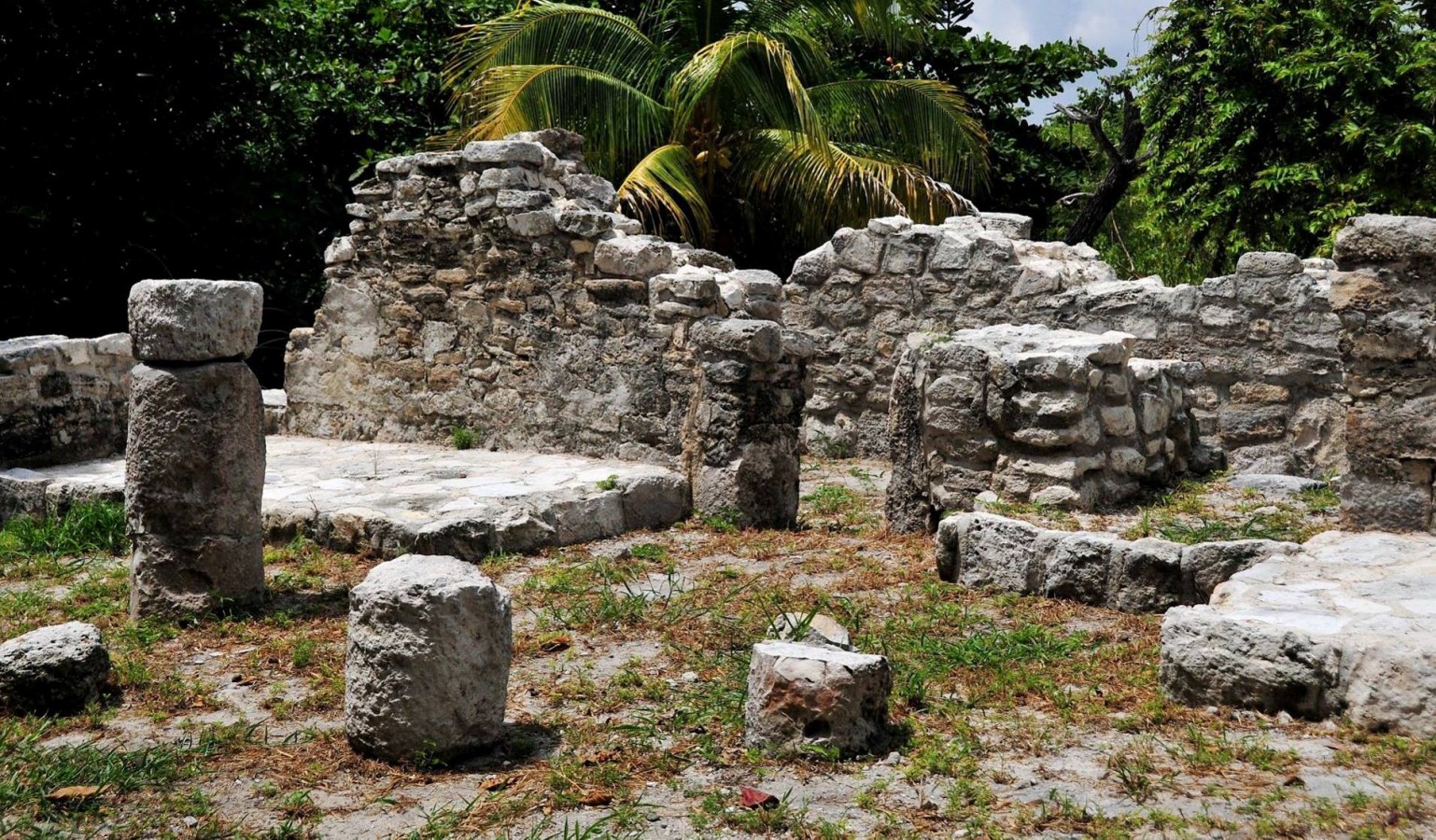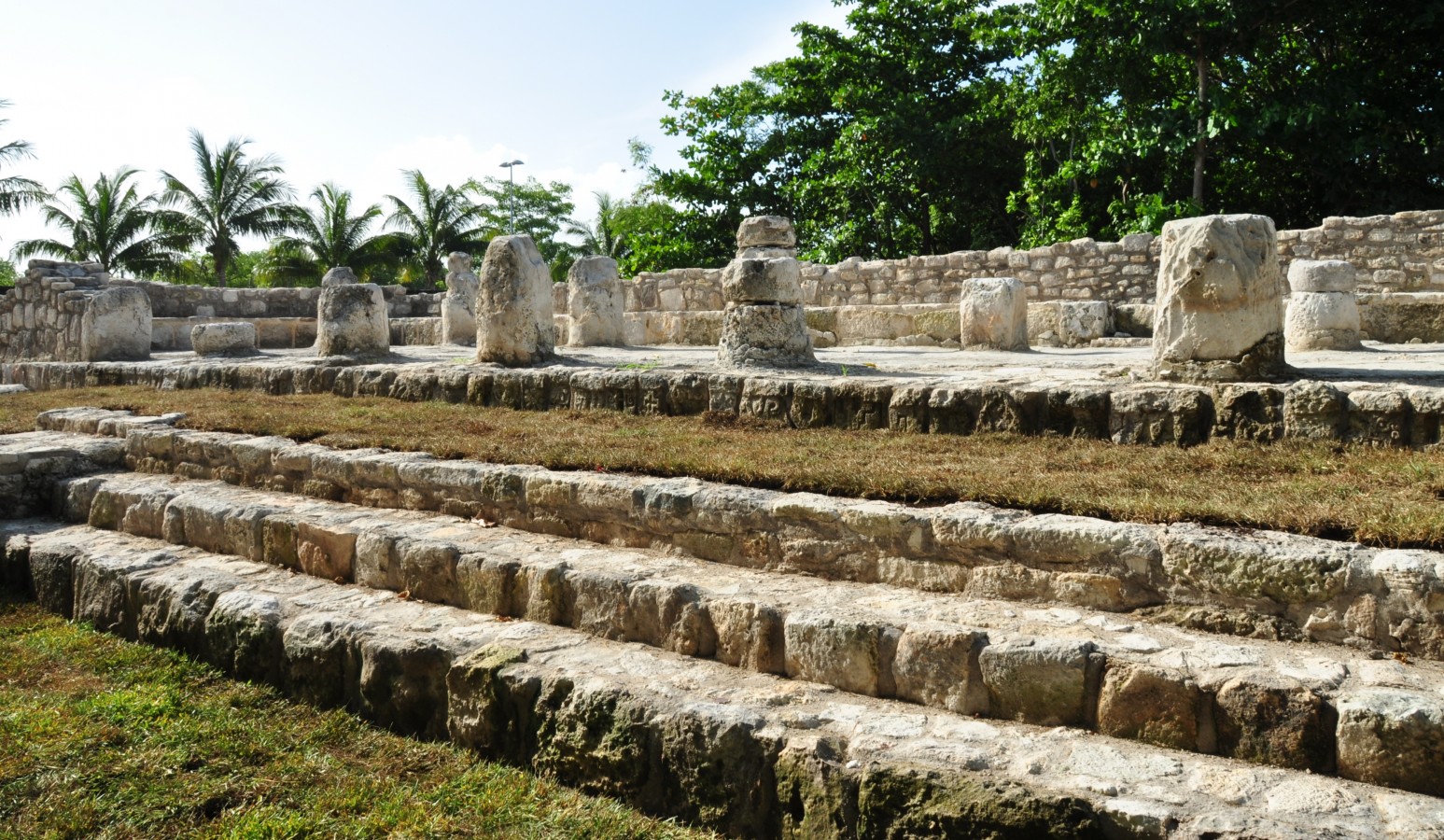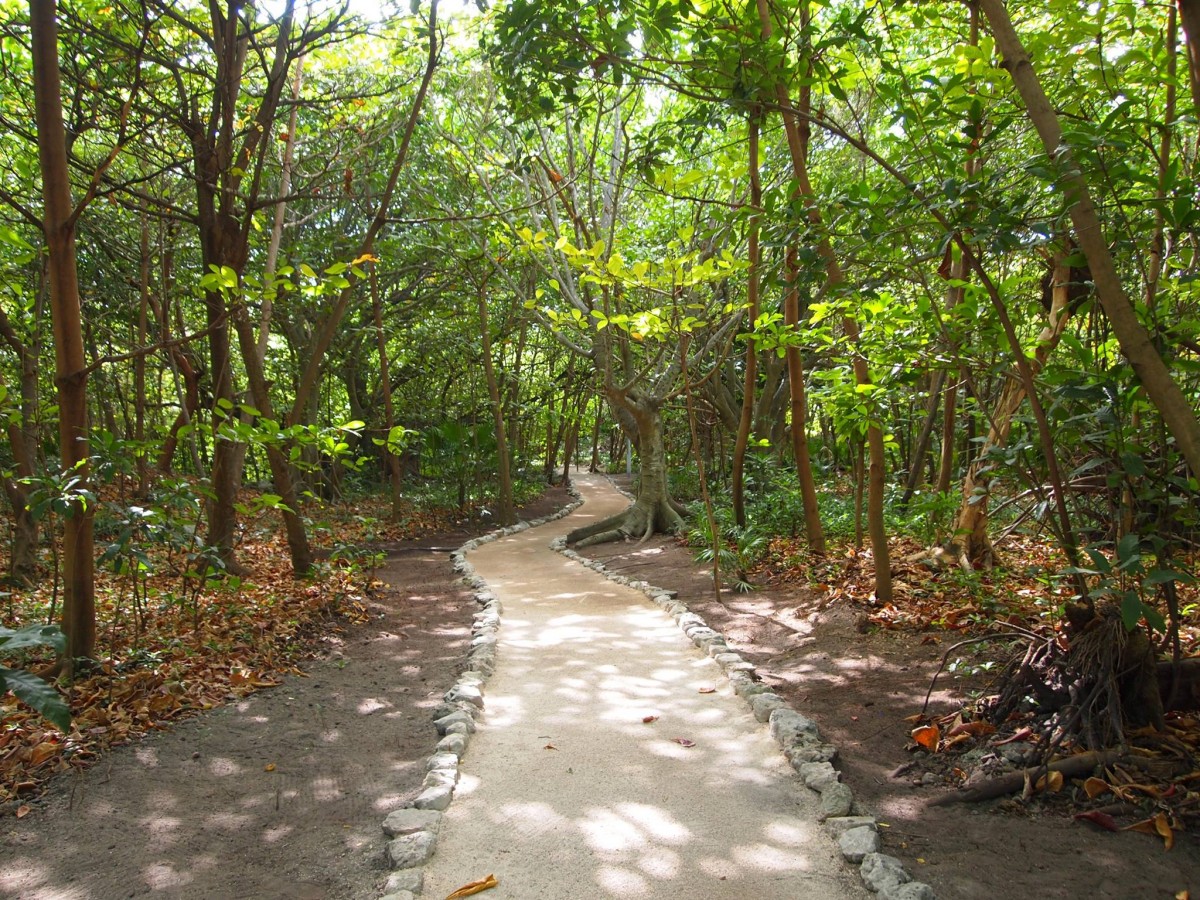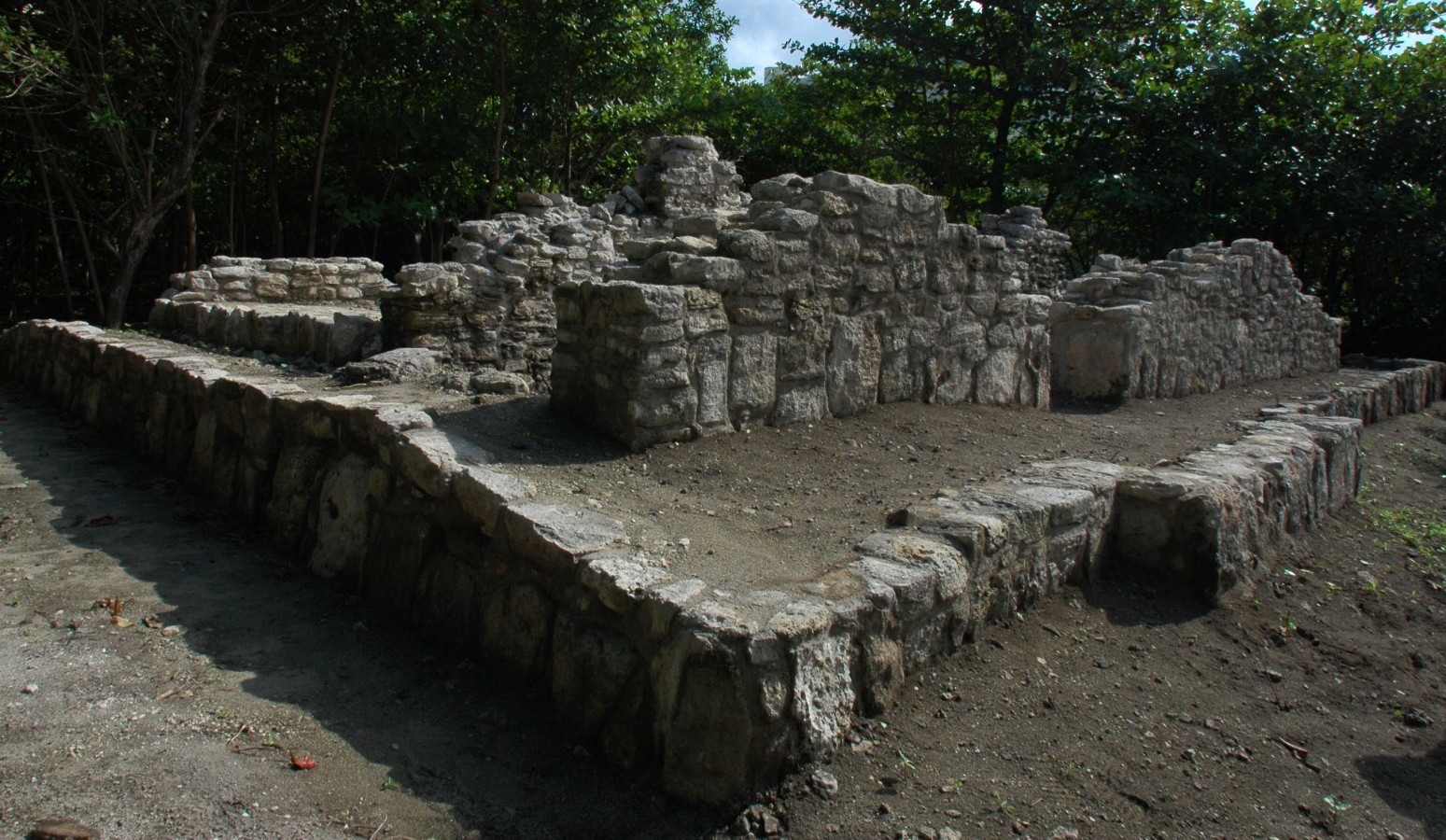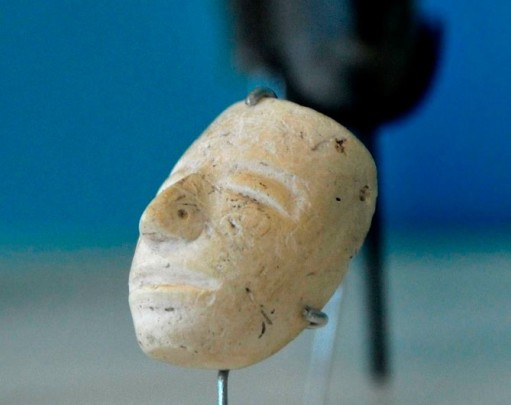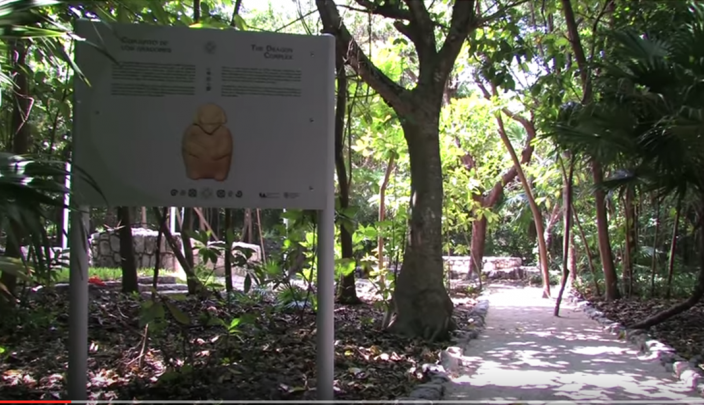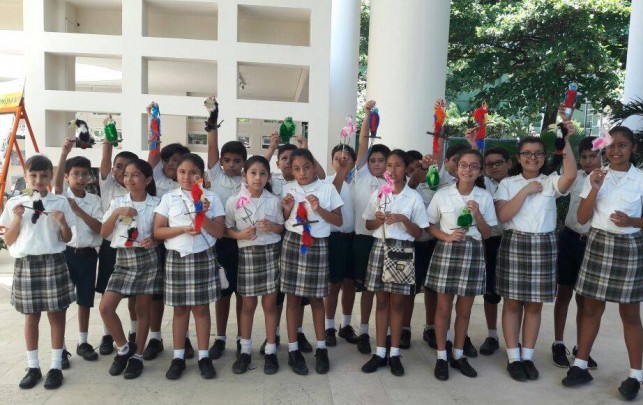San Miguelito
This was the name of a copra ranch in operation from 1950-1970 in this area.
An ancient city, eight centuries old, where explorers found an impressive palace of the god Chaac, almost 50 burial sites and a great variety of artefacts, some local and others imported from afar (made of obsidian, quartz, ceramic, coral and conch shell), testifying to its commercial importance.
About the site
The site is accessed by a pathway which starts from the lower hallway of the Cancun Archeological Museum. San Miguelito consists of at least four groups made up principally of structures which supported timber and palm houses long ago. It is thought that large families lived there during the final years before the arrival of the Spanish conquistadors.
The site’s most important complexes are presided over by palaces with large interior spaces and vestibules with columns supporting flat roofs, which were a novel architectural feature of buildings on the east coast of Quintana Roo during the thirteenth and fourteenth centuries. As they had open precincts, these buildings served a public purpose. They were equipped with benches and they faced an altar at which public ceremonies and celebrations were held.
The most important structure in San Miguelito is a base which was remodeled at least three times during its pre-Hispanic occupation. Upon this are preserved the remains of a temple which was once decorated with a cornice and painted mainly in red and blue. The base has a stairway with balustrades typical of the Postclassic period, and judging by the direction the pyramid is facing, it would appear to be related to the nearby site of El Rey.
The complex has managed to combine the original vegetation of San Miguelito with the gardens of the Cancun Archeological Museum, and so visitors can walk from one to the other, which is very pleasing.
The site’s most important complexes are presided over by palaces with large interior spaces and vestibules with columns supporting flat roofs, which were a novel architectural feature of buildings on the east coast of Quintana Roo during the thirteenth and fourteenth centuries. As they had open precincts, these buildings served a public purpose. They were equipped with benches and they faced an altar at which public ceremonies and celebrations were held.
The most important structure in San Miguelito is a base which was remodeled at least three times during its pre-Hispanic occupation. Upon this are preserved the remains of a temple which was once decorated with a cornice and painted mainly in red and blue. The base has a stairway with balustrades typical of the Postclassic period, and judging by the direction the pyramid is facing, it would appear to be related to the nearby site of El Rey.
The complex has managed to combine the original vegetation of San Miguelito with the gardens of the Cancun Archeological Museum, and so visitors can walk from one to the other, which is very pleasing.
Did you know...
- San Miguelito is the most important archeological site in Cancun.
- The bones of infants found there suffered poverty and hunger as a result of the conquest: all show signs of acute anemia.
- San Miguelito and El Rey most likely formed a single area with well-established commercial activity.
An expert point of view

Adriana Velázquez Morlet
Centro INAH Quintana Roo
Practical information
Monday to Sunday from 08:00 to 17:00 hrs. Last entry 16:30 hrs.
$95.00 pesos
Km 16.5 del Boulevard Kukulkán,
Zona Hotelera de Cancún, C.P. 77500
Benito Juárez, Quintana Roo, México.
Zona Hotelera de Cancún, C.P. 77500
Benito Juárez, Quintana Roo, México.
Services
-
+52 (983) 837 24 11
-
This email address is being protected from spambots. You need JavaScript enabled to view it.
-
FACEBOOK
-
TWITTER
Directory
Encargado
Carlos Alberto Esperon Vilchis
This email address is being protected from spambots. You need JavaScript enabled to view it.
+52 (998) 885 35 42

